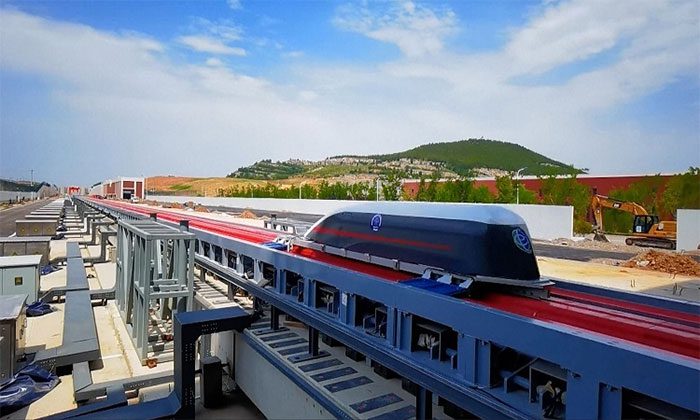China Successfully Tests Electromagnetic Levitation Vehicle Capable of Reaching Speeds of 1,030 km/h, Nearly the Speed of Sound.
(Video: CGTN).
The Electromagnetic Levitation Vehicle, developed in Jinan, Shandong Province by the Electrical Engineering Institute of the Chinese Academy of Sciences, will provide testing conditions and support research in advanced materials, aerospace, and ultra-high-speed transportation, South China Morning Post reported on October 21. Unlike traditional rocket sleds, the cabin of the electromagnetic levitation vehicle does not contain fuel, offering faster response times and easier control.
This facility gives scientists the opportunity to tackle common challenges in high-speed transportation, such as material properties, aerodynamics, and control system alignment. Achievements contributing to setting new speed records will aid in the development of new transportation technologies, including trains and aircraft, according to a report by CCTV. The facility in Jinan is the world’s first ground-based ultra-high-speed vehicle testing facility utilizing electromagnetic fields.
To propel a cabin weighing several tons at record speeds, the research team stated they had to overcome significant technical and technological challenges, such as designing and manufacturing a high-thrust linear motor and a 100-megawatt power system. The power supply for the facility consists of two main components: coils placed inside the cabin and a groove for a strong magnetic field. When the current is activated in the coils, the magnetic field generates electromagnetic force that pushes the cabin forward.

Testing of the electromagnetic levitation vehicle in Jinan.
A similar mechanism is used in electromagnetic guns, where the barrel acts as the groove for the projectile. By levitating above the track, magnetic levitation trains experience lower friction, higher speeds, and reduced pollution. This type of train also produces less noise and vibration, providing a more comfortable ride. The project, valued at $456.58 million, could play a significant role in building China’s high-speed magnetic levitation train system.
Previously, scientists developed the world’s first electromagnetic control system for a magnetic levitation transportation system capable of reaching speeds of 600 km/h in Qingdao, Shandong Province. That experimental project concluded in July 2021. The fastest operational commercial magnetic levitation train, built by Transrapid Shanghai with German technology, can reach speeds of 431 km/h. The system operates on a 30 km track between the city airport and a transit station. According to some experts, China is planning to open new magnetic levitation train routes over long distances.


















































